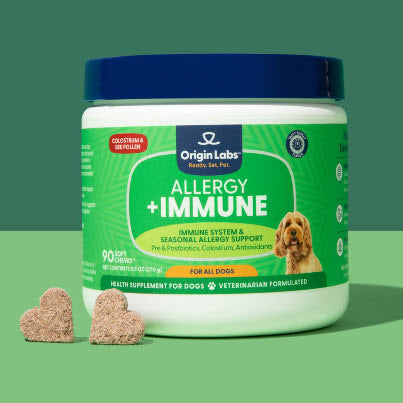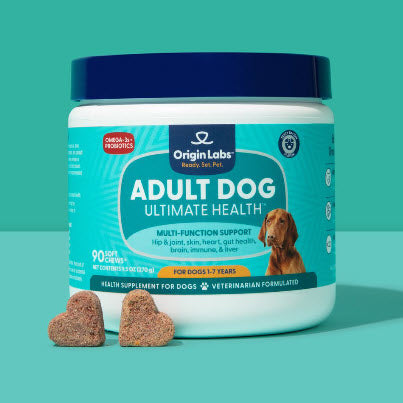Introduction
Can dogs eat mulberries? This question often arises among pet owners eager to share their favorite fruits with their furry companions. Mulberries, while generally safe for dogs, should be given in moderation to avoid any potential health issues.
Understanding the impact of human foods on dog health is crucial. Dogs have different digestive systems and nutritional needs compared to humans. Feeding them certain foods without proper knowledge can lead to adverse effects or even toxic reactions.
This article delves into:
- Nutritional Benefits: What key nutrients do mulberries offer, and how can they support your dog's health?
- Safety Considerations: How to safely incorporate mulberries into your dog's diet, including awareness of possible allergic reactions and digestive issues.
- Practical Tips: Responsible ways to introduce mulberries to your dog's meal plan.
For those interested in supporting their dog's overall health beyond just diet, consider exploring health supplements for puppies and adult dogs offered by Origin Labs. These supplements are specifically formulated to provide health support based on your dog's age, whether they are a growing puppy or an adult.
Feeding your dog mulberries can be a delightful treat, but it's essential to approach it with knowledge and caution.
The Nutritional Value of Mulberries for Dogs
Mulberries are packed with essential nutrients that can boost your dog's overall health. They are loaded with vitamins, minerals, and antioxidants, all of which play crucial roles in keeping dogs healthy.
Key Nutrients in Mulberries
Here are the main nutrients found in mulberries and how they benefit your dog:
- Vitamins: Mulberries are a great source of Vitamin C and Vitamin K. Vitamin C supports the immune system and helps maintain healthy skin and joints, while Vitamin K is necessary for proper blood clotting.
- Minerals: They also contain calcium, iron, and potassium. Calcium is important for strong bones, iron helps with red blood cell production, and potassium regulates fluid balance and muscle function.
- Antioxidants: Mulberries are bursting with antioxidants like resveratrol and anthocyanins. These powerful compounds fight against oxidative stress, which can lead to chronic diseases and aging.
- Dietary Fiber: Mulberries are high in fiber, which aids digestion and promotes a healthy weight by keeping your dog feeling full.
Health Benefits Supported by Scientific Evidence
Studies have shown that the antioxidants in mulberries, such as resveratrol, have anti-inflammatory properties. This can be especially helpful for dogs dealing with joint problems or arthritis. Additionally, the fiber content in mulberries promotes good gut health by supporting smooth digestion and preventing constipation.
The Importance of Balanced Nutrition
Giving your dog a well-balanced diet is essential for their overall well-being. Adding mulberries to their meals can provide extra nutrients that support different body functions:
- Strong Immune System: The vitamins and antioxidants in mulberries help boost the immune system, making your dog less susceptible to illnesses.
- Healthy Bones: The minerals found in mulberries, like calcium, contribute to maintaining strong bones and teeth in your dog.
- Optimal Digestion: The fiber content in mulberries aids in better digestion, reducing issues such as bloating or irregular bowel movements.
Understanding these nutritional benefits highlights the significance of offering a wide range of nutrient-dense foods to dogs.
Consider adding mulberries as part of a balanced diet but always consult with your veterinarian to tailor dietary choices specifically to your dog's needs. For more comprehensive support tailored to your dog's age, you might explore products like Ultimate Health chews, specially formulated for senior dogs. These chews are designed to provide health support to senior dogs as they grow, making them an ideal addition to their diet.
Can Dogs Safely Eat Mulberries?
1. Moderation is Key
Feeding mulberries to dogs requires a balanced approach. While these berries are packed with nutrients, it’s essential to understand their role within a dog's diet.
Benefits in Small Quantities
- Nutritional Boost: Mulberries offer vitamins and antioxidants that can enhance your dog's diet.
- Variety: Introducing new, safe fruits can make meals more interesting for dogs.
Mulberries should not replace core dietary components like high-quality dog food. Instead, they should be seen as a complement, providing additional nutrients without overpowering the primary diet.
Avoid Overfeeding
Overfeeding mulberries can lead to digestive issues. Dogs have different digestive systems compared to humans, and even healthy fruits need to be given in moderation.
Tips for Moderation:
- Start with small amounts to gauge your dog's reaction.
- Limit treats, including mulberries, to no more than 10% of their daily caloric intake.
- Introduce gradually, observing any changes in behavior or health.
2. Considering Allergic Reactions and Digestive Sensitivities
Introducing new foods always carries the risk of allergies or sensitivities. Mulberries are no exception.
Identifying Allergic Reactions
Dogs can exhibit various symptoms if they're allergic:
- Itching or Redness: Look for signs of skin irritation.
- Vomiting or Diarrhea: Gastrointestinal distress can indicate an adverse reaction.
- Swelling: Particularly around the face or paws.
If you notice any of these symptoms after feeding your dog mulberries, discontinue immediately and consult your veterinarian.
Managing Digestive Sensitivities
Some dogs may have sensitive stomachs that react adversely to new fruits:
- Introduce mulberries slowly into their diet.
- Monitor stool consistency and frequency.
- Provide plenty of water to help with digestion.
Starting with one or two berries can help you determine if your dog can handle this fruit without any adverse effects. Always observe how your pet reacts before making mulberries a regular part of their diet.
Incorporating mulberries responsibly means balancing benefits with potential risks. The next sections will delve into other safety considerations and expert advice on ensuring that mulberries are a safe and enjoyable treat for your furry friend.
2. Considering Allergic Reactions and Digestive Sensitivities
Before giving your dog mulberries, it's important to think about how they might react to this new fruit. Dogs can have allergies or sensitivities to certain foods, including mulberries. Here's what you need to know:
Identifying and Managing Allergic Reactions
When you give your dog mulberries, keep an eye out for any signs of an allergic reaction. These can include:
- Itchy skin
- Hives or rashes
- Swelling of the face, ears, lips, or eyelids
- Difficulty breathing
- Vomiting or diarrhea
If you notice any of these symptoms after your dog eats mulberries, stop giving them the fruit right away and talk to your vet.
Here are some tips for managing allergic reactions:
- Start small: Give your dog a small amount of mulberries at first to see how they react.
- Watch closely: Keep an eye on your dog for at least a day after they eat mulberries.
- Keep a record: Write down what your dog eats and any reactions they have. This can help you figure out if they're allergic to mulberries or something else.
Digestive Sensitivities
Some dogs have sensitive stomachs and may experience digestive issues when they eat certain foods, including mulberries. Here are some signs that your dog might have digestive problems with mulberries:
- Loose stools or diarrhea
- Gas or bloating
- Stomach upset
To prevent digestive issues when introducing mulberries to your dog's diet:
- Go slow: Start by giving them small amounts of mulberries over a few days.
- Mix it in: Combine the mulberries with their regular food to make it easier on their stomach.
- Check their poop: Pay attention to any changes in their poop, like consistency or frequency.
These tips can help make sure that giving mulberries to your dog is safe and enjoyable for them. It's all about finding the right balance between introducing new foods and keeping their digestive system happy.
Understanding how to identify and manage both allergic reactions and digestive sensitivities is key in responsibly incorporating mulberries into a dog's diet. This approach helps maintain overall health while exploring new dietary options for your furry friend.
Other Safety Considerations for Feeding Mulberries to Dogs
1. The Importance of Using Ripe and Washed Mulberries
It's crucial to prioritize your dog's safety by offering them ripe and thoroughly washed mulberries. Unripened mulberries contain compounds that can cause stomach upset and other digestive issues in dogs, while ripe mulberries are generally safer and easier to digest.
Potential Risks of Unripened Mulberries:
- Digestive Distress: Unripened mulberries have higher levels of tannins and other naturally occurring compounds that can lead to gastrointestinal discomfort, including vomiting and diarrhea.
- Toxicity Concerns: While not highly toxic, unripened mulberries might still contain substances that could be harmful in large quantities.
Proper Washing Practices:
- Remove Pesticides and Contaminants: Washing mulberries thoroughly helps remove any pesticides, dirt, or bacteria that may be present on the fruit's surface.
- Reducing Risks of Mold: Freshly harvested mulberries can sometimes harbor mold spores. Washing them reduces this risk.
To wash mulberries effectively:
- Place the berries in a colander.
- Rinse them under cold running water.
- Gently agitate them to ensure all surfaces are cleaned.
- Allow them to drain before serving.
2. Potential Dangers of Dried Mulberry Products
Dried mulberry products often pose different risks compared to fresh ones. While dried fruits can be convenient, they usually come with added sugars and preservatives that aren't ideal for canine health.
High Sugar Content:
- Weight Gain Risk: The concentrated sugars in dried mulberries can contribute to weight gain if consumed in large amounts.
- Dental Health Issues: Excessive sugar intake can also affect your dog's dental health, leading to tooth decay and gum disease.
Additives and Preservatives:
- Chemical Additives: Some dried fruit products include preservatives like sulfur dioxide to prolong shelf life, which isn't suitable for dogs.
- Artificial Flavors: Artificial flavors may also be added, which can cause allergic reactions or digestive issues.
When considering whether "are mulberries safe for dogs," it's essential to focus on fresh, ripe, and well-washed berries rather than dried varieties laden with additives.
Always opt for ripe mulberries and wash them thoroughly before feeding them to your dog. Be cautious about dried mulberry products due to high sugar content and potential additives.
These practices help ensure the safety of feeding mulberries to dogs while minimizing potential risks associated with unripened or improperly washed fruits.
2. Potential Dangers of Dried Mulberry Products
Dried mulberries can be risky for dogs as they come with their own set of problems. It's important for pet owners to understand these risks before deciding to give dried mulberries to their dogs. While fresh mulberries can be a healthy addition to a dog's diet in moderation, dried mulberries are not as suitable due to their high sugar content and potential additives.
High Sugar Content:
Dried mulberries have more sugar than fresh ones, which can lead to various health issues in dogs:
- Weight gain
- Dental problems
- Increased risk of diabetes
Potential Additives:
Commercially dried mulberries may contain additional substances that can harm dogs:
- Preservatives: Some brands use sulfur dioxide as a preservative, which can upset a dog's stomach or cause allergies.
- Artificial flavors or sweeteners: These additives can have negative effects on a dog's health. For example, xylitol is extremely toxic to dogs even in small amounts.
Ensuring the Quality and Preparation of Mulberries Given to Dogs:
Here are some guidelines to follow when giving mulberries to your dog:
- Choose fresh and organic mulberries that haven't been treated with any chemicals or sugars.
- Wash the berries thoroughly before feeding them to your dog.
- Keep an eye out for any signs of negative reactions such as vomiting, diarrhea, or changes in behavior after your dog consumes mulberries.
These points emphasize the importance of checking the quality and preparation of any mulberry products before sharing them with your furry friend.
Consulting a Veterinarian: Expert Advice on Mulberries for Dogs
Ensuring the health and wellbeing of your dog involves making informed dietary choices. Veterinary professionals are crucial in guiding these decisions, especially when considering incorporating new foods like mulberries into your dog's diet.
Role of Veterinarians
Veterinarians provide tailored advice based on a dog's unique health profile. They consider factors such as:
- Age
- Breed
- Existing health conditions
- Nutritional needs
A veterinarian can determine if introducing mulberries is appropriate for your dog. They will assess any potential benefits against possible risks, ensuring a balanced approach to diet.
Assessing Nutritional Benefits
Mulberries offer various nutrients that might benefit dogs, but not all dogs will react the same way. A veterinarian can help identify how these nutrients can fit into your dog's overall diet plan. This professional evaluation ensures that:
- Nutrient balance is maintained.
- Any specific dietary deficiencies are addressed without over-reliance on mulberries.
Identifying Risks
Introducing new foods always comes with some risk, including allergic reactions or digestive issues. Veterinarian guidance helps in:
- Monitoring first-time consumption: Vets often recommend small portions initially to observe any adverse reactions.
- Managing allergies and sensitivities: Recognizing symptoms early on prevents severe health issues.
- Avoiding potential toxicities: Some parts of the mulberry plant may not be suitable for dogs.
Expert Recommendations
Veterinarians also provide practical advice on how to prepare and serve mulberries safely:
- Ensure mulberries are ripe and washed to remove pesticides or contaminants.
- Avoid dried mulberry products due to their high sugar content and potential additives.
Involving a veterinarian in these decisions aligns with best practices for pet nutrition, ensuring your dog receives safe and beneficial treats within a controlled dietary framework.
Finally, consulting a vet before making any significant changes minimizes risks and promotes overall health, helping you make the best choices for your furry friend. By doing so, you can confidently incorporate mulberries into your dog's diet where appropriate and enjoy peace of mind knowing their wellbeing is prioritized.
Conclusion
Feeding mulberries to dogs can offer nutritional benefits when done properly. These berries are packed with essential nutrients that can contribute positively to your dog's overall health. However, it's crucial to remember the principle of moderation. Mulberries should only be a small part of a balanced diet, ensuring that your dog receives a variety of nutrients from different sources.
Individual Considerations:
- Every dog is unique, and reactions to new foods like mulberries can vary.
- Watch for any signs of allergic reactions or digestive sensitivities.
- Always introduce new foods gradually and in small amounts.
Consulting with a Veterinarian:
Veterinary professionals provide invaluable guidance when it comes to dietary choices for dogs. Before introducing mulberries or any new food into your dog's diet, consult your vet. They can offer personalized advice based on your dog’s specific health needs and conditions.
Key Takeaways:
- Can dogs eat mulberries? Yes, but do so responsibly.
- Moderation is essential.
- Always seek veterinary advice before making dietary changes.
By keeping these points in mind, you can ensure that incorporating mulberries into your dog's diet is both safe and beneficial.
FAQs (Frequently Asked Questions)
Can dogs safely eat mulberries?
Yes, dogs can safely eat mulberries. However, it is important to feed them in moderation and consider potential allergic reactions and digestive sensitivities.
What are the nutritional benefits of mulberries for dogs?
Mulberries contain key nutrients that can benefit a dog's health, including vitamins, minerals, and antioxidants. These nutrients can contribute to a balanced diet and support the overall wellbeing of dogs.
Are mulberries safe for dogs?
Yes, mulberries are safe for dogs to consume when given in moderation and with consideration of potential allergic reactions and digestive sensitivities. It is important to use ripe and washed mulberries and avoid dried mulberry products with high sugar content or additives.
What are the potential dangers of dried mulberry products for dogs?
Dried mulberry products often contain high sugar content and potential additives, making them less suitable for a dog's health. It is important to ensure the quality and preparation of mulberries given to dogs to avoid potential risks associated with dried products.
How can I incorporate mulberries into my dog's diet responsibly?
To incorporate mulberries into a dog's diet responsibly, it is essential to feed them in moderation as a small part of a balanced diet. Additionally, it is important to consider potential allergic reactions and digestive sensitivities, use ripe and washed mulberries, and avoid dried mulberry products with high sugar content or additives.
Why is it important to consult with a veterinarian before introducing mulberries into a dog's diet?
Consulting with a veterinarian before introducing new foods like mulberries into a dog's diet is crucial as veterinary professionals can provide expert guidance on dietary choices for dogs. They can help assess individual considerations and ensure that the introduction of new foods aligns with the specific health needs of each dog.








